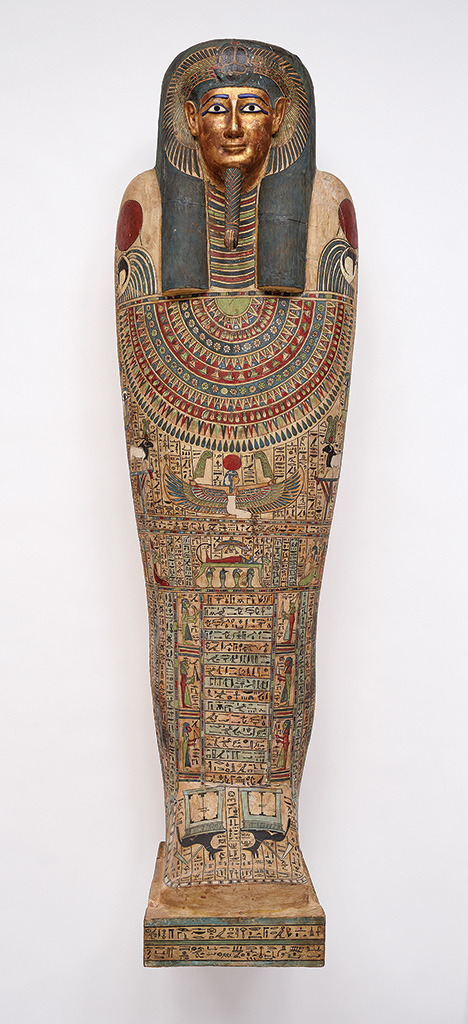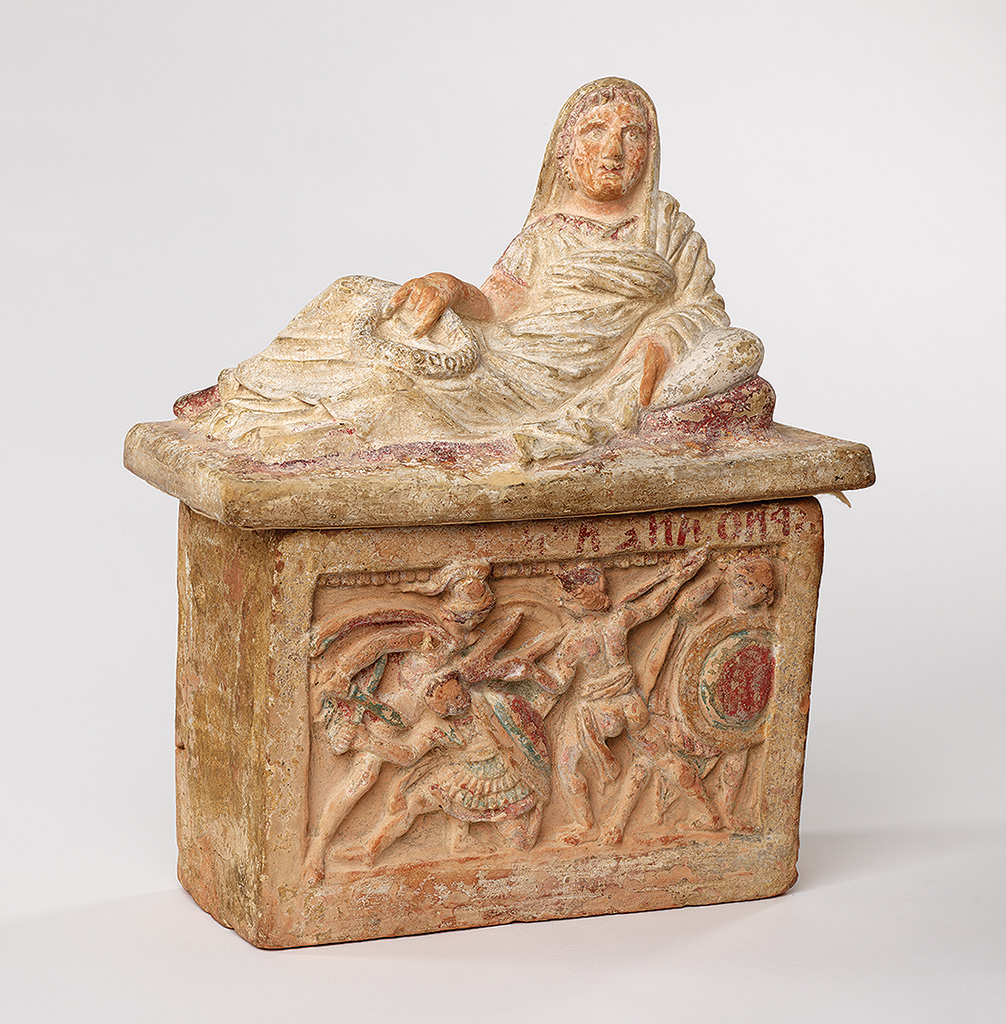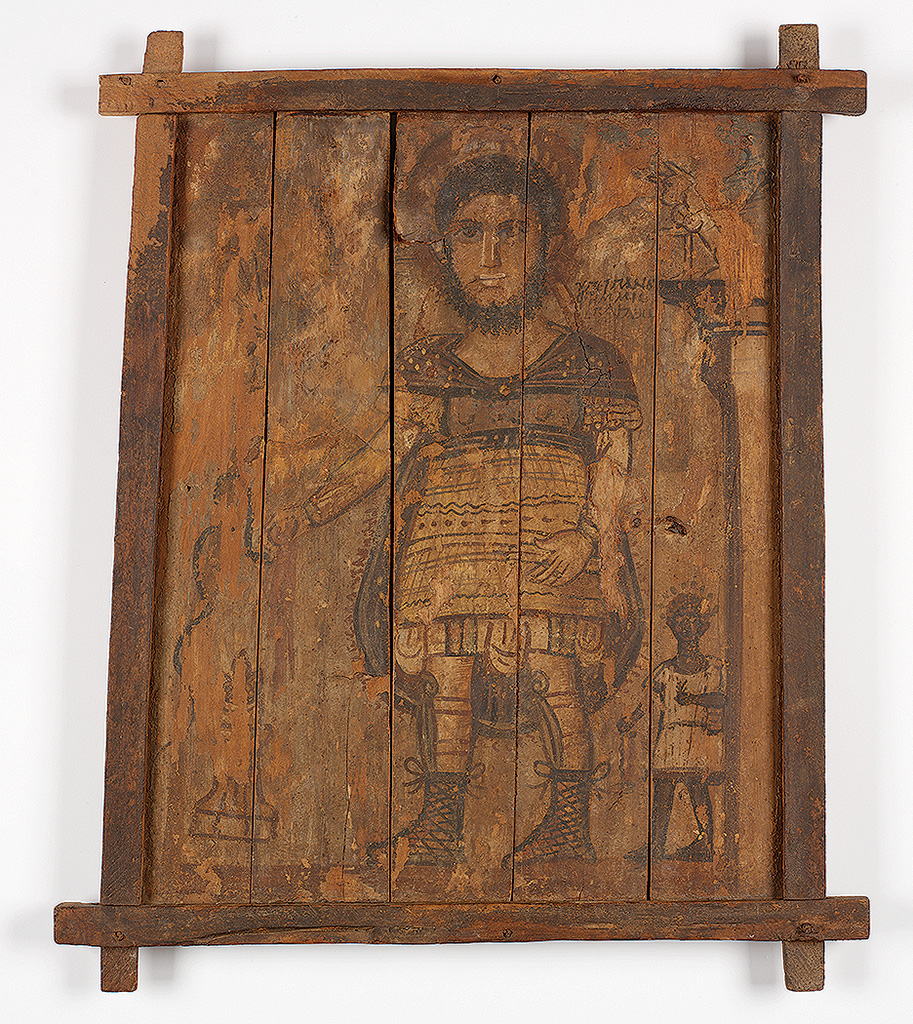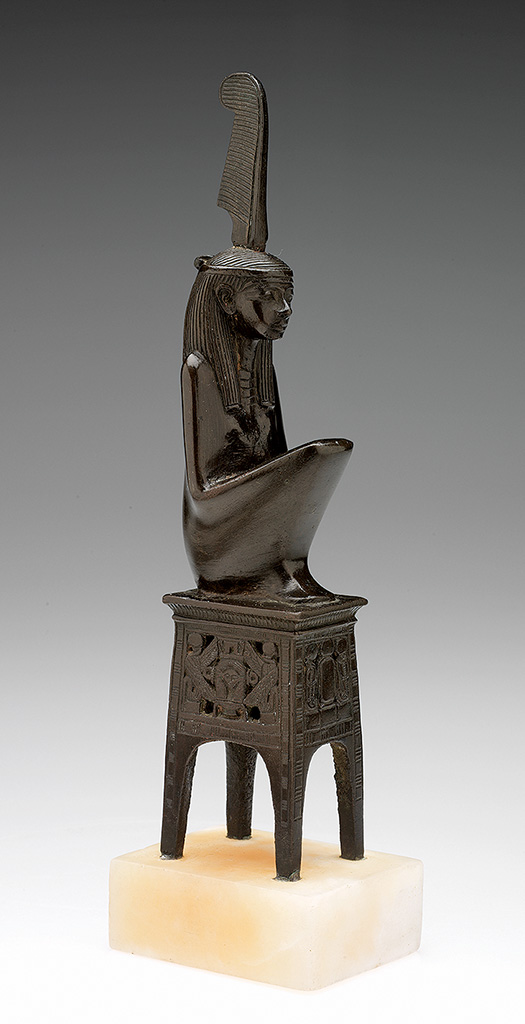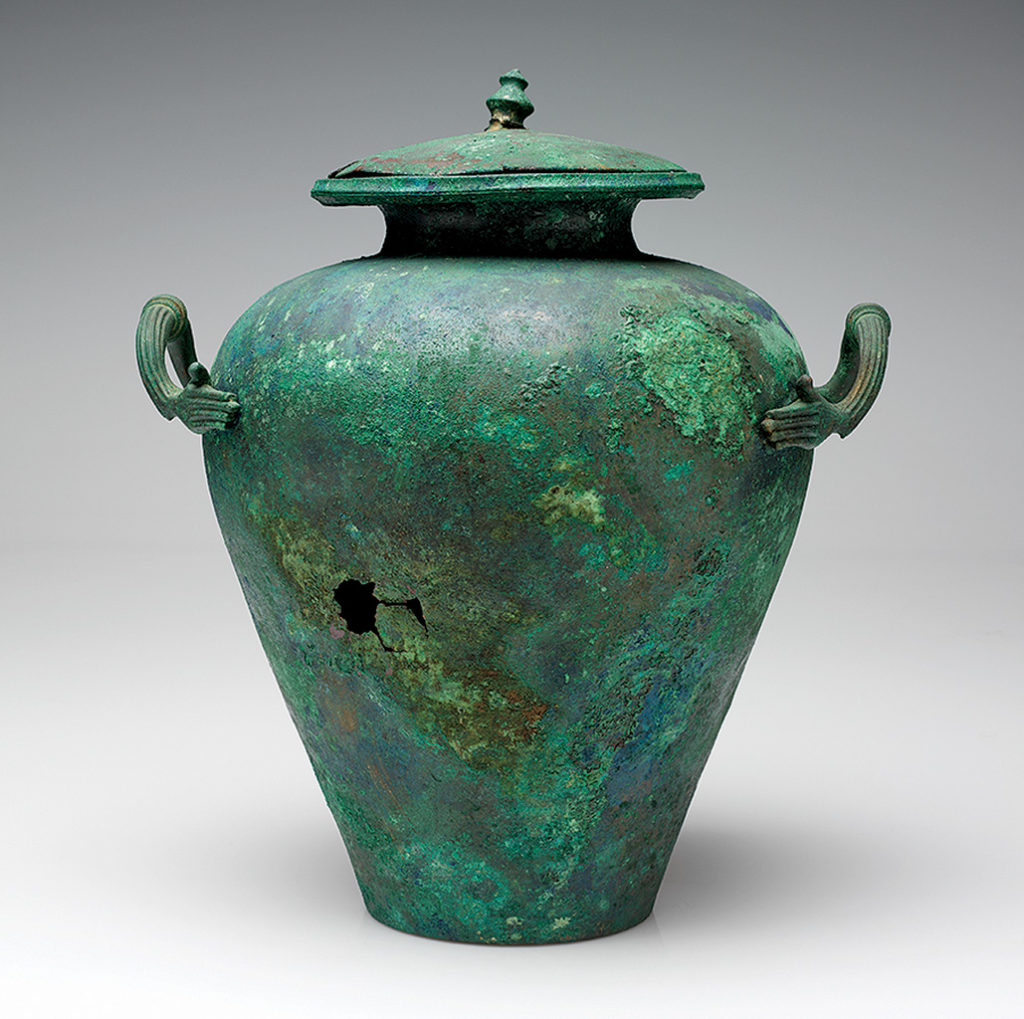Return of the mummy
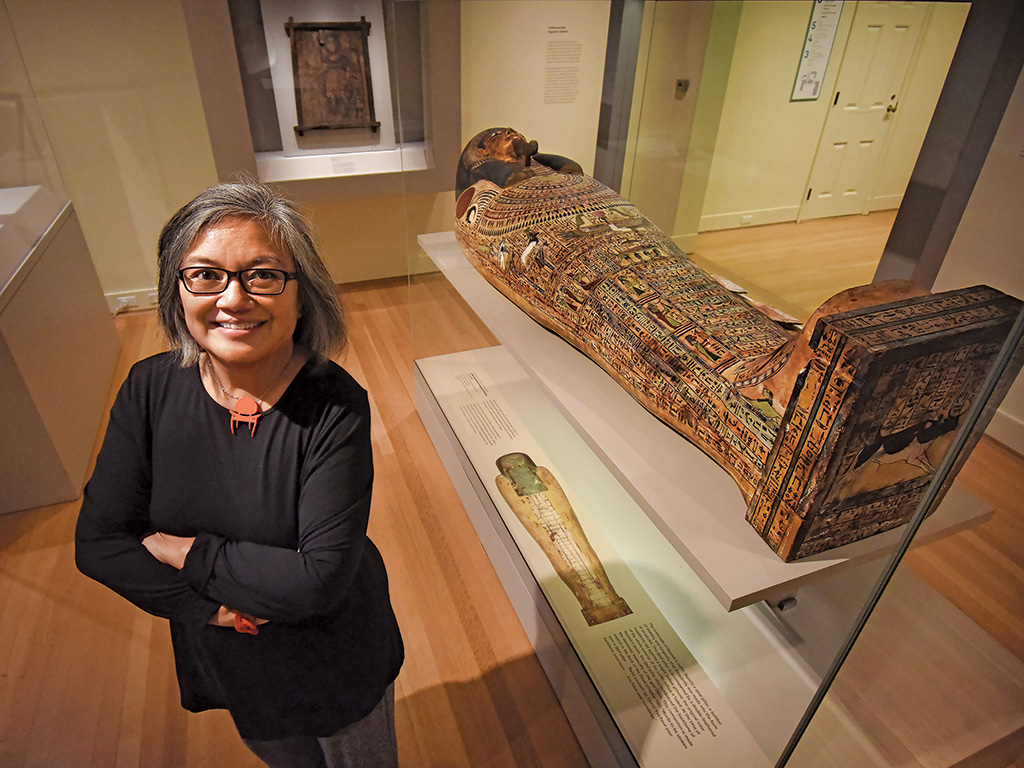
Museum curator Gina Borromeo’s top five favorites
Gina Borromeo ’84 is the curator of ancient art at the Rhode Island School of Design (RISD) Museum in Providence, R.I. For the past 19 years, she has been overseeing the Egyptian, Greek, Etruscan and Roman collections.
Yet one fall morning, as she walked from the main lobby to the Egyptian gallery, she often let out a “wow” or “look at this,” reacting to art with the animated joy and curiosity one might expect of a first-time visitor. And when she landed on the sixth floor in front of the mummy known as Nesmin—a favorite of hers and the source of one of her most recent accomplishments—she really lit up.
“What I love about this job is the constant sense of learning,” said Borromeo, who majored in art history at Wheaton and gained experience while a student as a curatorial assistant working with the college’s Permanent Collection. “Knowing that, even as someone who has worked here for 24 years [since 1995], I don’t know everything about the ancient art collection. There is plenty I still need to learn, and that’s the fun part.”
The biggest example of her openness to new ideas and information is the 2,100-year-old mummy, whose body, thanks to her, visitors no longer can see on display. She initiated and took the lead on returning the mummy of Nesmin to his decorative coffin as of November 2018, after he had been exhibited in plain view for 80 years.
The effort, which was inspired in response to questions posed to Borromeo by a RISD M.F.A. candidate’s museum project and a Brown University archaeology major’s thesis about the appropriateness of seeing the mummy out in the open, sparked a great deal of thought and conversation (as well as some media attention) regarding whether a body is art to display.
“There was this growing feeling that a body—a human body—is not a work of art. And that Nesmin is entitled to the rest that he deserved because we interrupted his burial,” Borromeo said. “I felt that it was time to just make it right. After intense conversations with members of the museum staff, I decided to put Nesmin’s mummy back in his coffin instead of continuing to display the mummy beside the coffin. … I think about it as being responsive to questions and issues, being responsive to things going on around us. … Just because this is the way it has always been done, just because American museums still consider it normal to show Egyptian bodies, doesn’t mean we have to continue doing it.”
Borromeo’s path to the RISD Museum began at Wheaton, where she first fell in love with Greek art in then-professor Roberta Olson’s class.
“I thought then, oh my gosh, this is absolutely amazing stuff. It was Greek art that really captured me initially—the idea that you can learn so much about a culture from the visual material it produced,” Borromeo said. “I was looking at pieces created by people who lived so long ago. It was very exciting for me. It feels strangely like home now that I’m working with Greek art again, because I’m always in touch with how I got started. It was that class with Roberta Olson that really made me think, you know, maybe I could go on to graduate school and learn about this material. Wheaton gave me a great education in art history.”
Wheaton Professor Emerita of Art History Ann Murray recalled that Borromeo began as a science major and then switched. “It was a bold move on her part,” Murray said. “She had a lot of catching up to do in a brand new discipline. I remember her being a real trouper and never a complainer. She did very well and is a real credit to Wheaton’s art history program.”
Now, the curator is the one inspiring curiosity among art students and other museum goers. “I’m the caretaker for a collection of 2,300 objects,” Borromeo said in describing her role. “I make sure that they’re well-conserved. I do research on them. I talk about them in educational contexts. I also try to glean from these objects things that are applicable to the world around us today. So, I try to seek out the relevance of the past to the present.”
As a way for us to get to know her as well as see the results of her work, we asked her to walk us around the museum and share her five favorites in the collection that she curates. It was like asking her to pick her favorite child (she has two sons in college), but she managed to tell us. What we learned: she is funny, wise and a great storyteller. Take a look.
